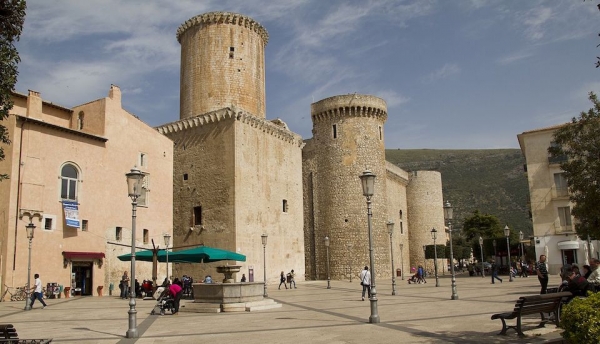It houses an unexpected series of precious artistic and architectural treasures, all worthy of being visited and discovered. important monuments of Roman and medieval times. Walking through the streets of the historic center will not leave the tourist dissatisfied, including the surroundings, which are also rich in monuments and suggestive places to see, for lovers of mystery and legends.
The Cathedral of San Pietro
Located in the ancient heart of Fondi, the Cathedral of San Pietro was built in the 12th century on ancient pre-Roman structures. Entering inside we could admire the tomb of Cristoforo Caetani inside the "chapel of the cross", a bishop's chair in marble and a splendid pulpit decorated with Cosmatesque mosaics dating back to the thirteenth century. Other works kept in the church are a Triptych of the Annunciation by Cristoforo Scacco and a painting of the Majesty with St. Peter and St. Paul by Antoniazzo Romano.
The churches
The tour of the places of worship of Fondi continues with a visit to the collegiate church of Santa Maria Assunta and the Sanctuary of the Madonna del Cielo built at the end of the 14th century by order of Onorato II ° Caetani. With a square plan with 3 naves, it has a facade decorated with 3 portals; the central one is decorated with a splendid lunette, where there are three statues, and is surmounted by a rose window. The evocative interior preserves the sacred statue of the Madonna del Cielo, a ciborium from 1491 and some Renaissance altars.
Madonna of the rescue
Characteristic is the Church of the Madonna del Soccorso whose rural Romanesque aspect has a façade with 2 pointed arches supported in the center by a pillar. The interior has a single nave with round arches, while one of the most important paintings of the church is the fresco in the sacristy dating back to the seventeenth century.
San Domenico
Also worth a look is the Church of San Domenico in which we find a beautiful square cloister consisting of 22 pillars and two columns that support as many pointed arches. The entrance portal to the chapter house and two mullioned windows, one with a Gothic fretwork and the other with a lance, are noteworthy.
The Church of San Francesco
The church and the convent were built in 1363 and the internal hall has 2 naves. The church preserves a painting of the Madonna del Rosario dating back to the sixteenth century probably made by a Dominican
The Caetani Castle
Entering the main square of the city, our gaze will be captured by the symbol of the city of Fondi. The Baronial Castle of the Caetani built between the 13th and 15th centuries. You immediately notice the Cylindrical Tower, with a particular battlements, which stands out from a square tower. The other parts of the castle were built in the same period, including the other corner towers. To the visitor, the castle is truly majestic, but fascinating at the same time, and thanks to its good state of conservation it is possible to visit it.
Prince's Palace
Next to the castle we find the Prince's Palace. The building dates back to the 15th century and is embellished with magnificent Catalan-Gothic decorations, as it was the Catalan Matteo Forcimanya who built it on the commission of Onorato II ° Caetani. The establishment of the Museum allows you to visit the elegant and fascinating interiors.
The Sanctuary of the Madonna della Rocca
Located on Mount Arcano. It was built by the Benedictine monks around the 10th-11th century. The sanctuary houses a Madonna nursing the Child of the thirteenth century.
Monastery of San Magno
San Magno, finally reopened in 2007 after a long restoration, located halfway between Monte San Biagio and Fondi, within the Regional Park of the Ausoni Mountains stands the San Magno Monastery on the slopes of Monte Arcano. This and the nearby Sanctuary of the Madonna della Rocca, located on the top of Monte Arcano, delimit what is called the Demetrian Field of the ancient Romans, that is, the Valley of the Martyrs of Christians.
In the second half of the third century these places were the scene of one of the most ferocious episode that the Christian world remembers. A large number of followers of Christ, with San Magno and San Paterno, took refuge in the ravines of the mountain to escape the execution, by Emperor Decius, of yet another edict issued against Christians. These, discovered by the troops of the Empire, testified their faith by sacrificing their lives. The remains of the martyrs were kept for centuries in the Roman building that stood on the source of the Licola River.







